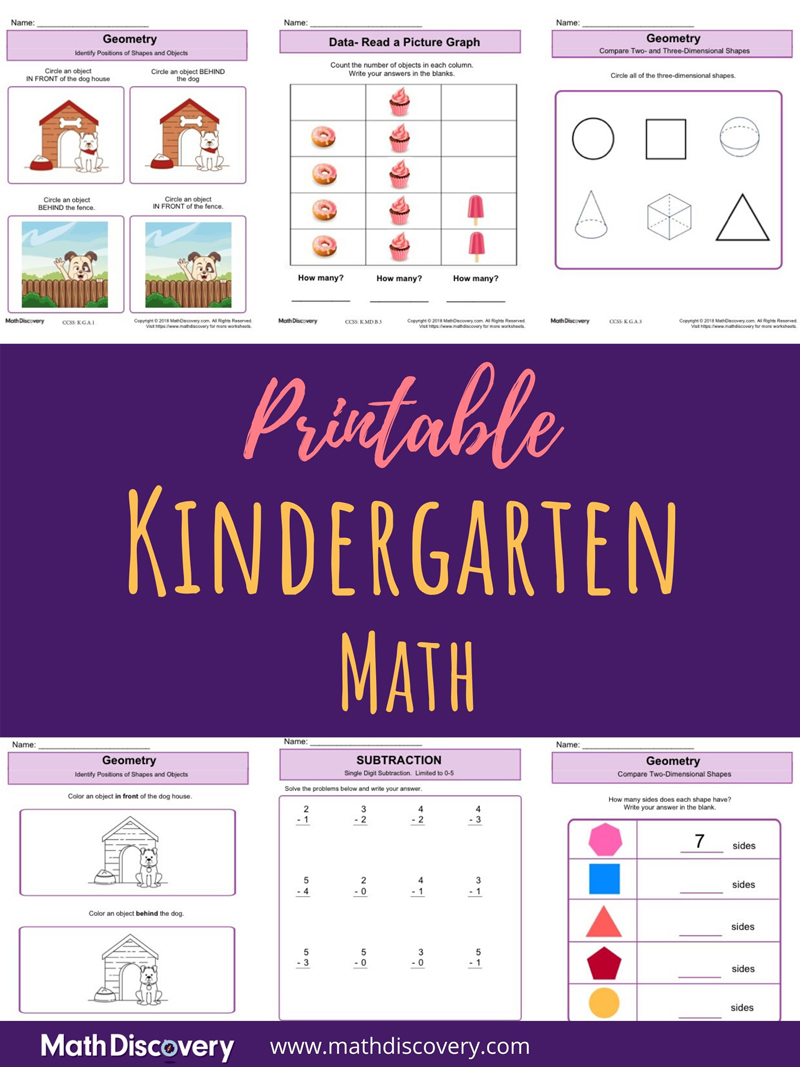Kindergarten Math Worksheets

Introduction
In Kindergarten, students are introduced to numbers and shapes. They learn to count up to 20 objects and they use counting skills to begin adding and subtracting. Students are expected to fluently add and subtract with pairs of numbers up to 5 by the end of the year. Students also start noticing shapes and their arrangements in their environment. They name and describe shapes and how they are similar or different from other shapes.
Printable Lessons
Kindergarten Counting and Comparing Worksheets
Students learn to count up to 20 objects and they learn rote counting up to 100. They do this gradually by starting with smaller sets of ordered objects and gradually increase the number and complexity of arrangement. Students learn to compare first with objects, then they can compare numbers that represent objects up to 10.
Kindergarten Addition Worksheets
Students learn to add by counting objects and fingers, then using pictures and words. Sums are limited to 10, which means that students can easily use their fingers to support their learning. They are expected to be fluent with sums up to 5 by the end of the year.
Kindergarten Subtraction Worksheets
Kindergarten students follow a similar progression of subtraction skills as they did addition skills. They will start by representing subtraction using objects fingers, drawings, and then words. Though they are only expected to master differences up to 5 by the end of the year, students work with numbers that have differences up to 10.
Kindergarten Measurement Worksheets
Students begin to recognize, describe, and compare the measurable attributes of objects, such as their length, height, and weight.
Kindergarten Sorting and Picture Graphs Worksheets
Students organize data on picture charts. They sort pictures into categories and place the pictures onto a chart. They then use these representations to answer simple questions that involve counting.
Kindergarten Shapes Worksheets (Geometry)
Students identify some two-dimensional and three-dimensional shapes by name and recognize the difference between two and three dimensions. They describe the location of shapes and objects in relation to each other (e.g. in front of, behind, beside, etc.). They identify shapes that are similar or different from each other based on a given attribute, and they combine shapes to make larger shapes.
